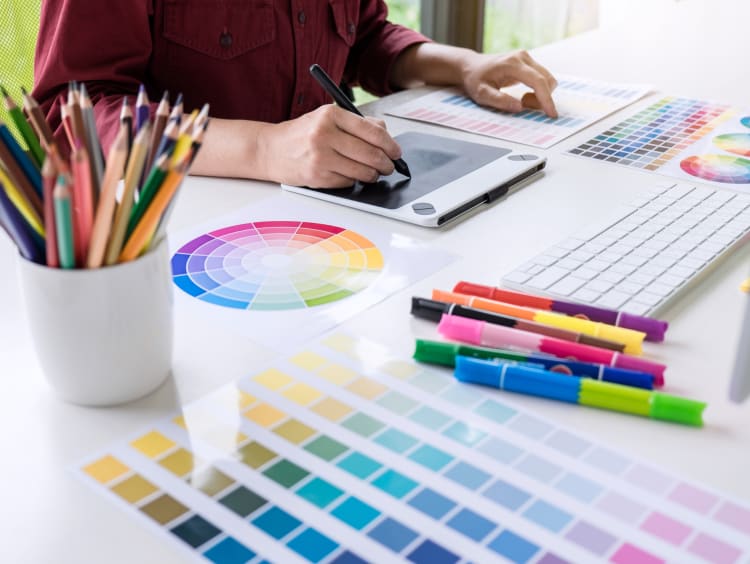How Advertisers Use Color

Color theory is a concept that most designers and advertisers know the basics of. Color is important because it affects the entire outcome of branding and advertising. Consumers’ brains use color to recognize products and the brands that make them.
Color psychology is based on the association that our brains make with certain colors. Understanding this association allows designers to match the right colors to the right products. When you look at products within a certain industry, you will see many of the same colors being used over and over again. This is no coincidence. Those colors connect the right audience with the right brand based on consumer expectations.
Here's what designers know about choosing the right color palettes.
What Each Color Conveys in Advertising
Red
The color red is associated with energy, love and passion. It is attention-grabbing and vibrant. Red may also be associated with danger, anger and confidence. Dating companies may use red in their branding to emphasize love and passion. Restaurants may use red to signify warmth or spiciness.
Orange
Orange is most often associated with a friendly, cheerful atmosphere. It has a few of the same characteristics as red but tends to also remind consumers of youthfulness and vitality. Orange also signifies affordability, friendliness and humor. Children's businesses may use orange as a way to attract kids and to evoke the feeling of fun.
Green
Companies wanting to associate themselves with nature and the environment may use green in their branding. Green has a lot of different associations in color psychology including health, wealth and balance. Green is seen as soothing and a sign of renewal. Many eco-friendly businesses use a shade of green in their branding.
Blue
Likely because of its association with water, the color blue is known to evoke feelings of calmness and tranquility. Blue can also signify peace and relaxation. Certain shades of blue may trigger feelings of sadness. Blue is also commonly associated with trust, therefore you see many banks using blue in their branding.
Purple
Because purple is not commonly seen in nature, it has a more mysterious association. Purple is often associated with royalty and luxury. Mystery, wealth and spirituality are also psychological connections people make to the color purple. Financial planners may use the color purple in branding to evoke feelings of wealth.
If you are interested in how color plays a role in consumer choices, join the Bachelor of Arts in Advertising and Graphic Design degree program at Grand Canyon University to get first-hand experience with branding.
If you’re interested in pursuing a career in animation, learn more about the programs within the College of Fine Arts and Production and check out our website or click the Request More Information button on this page.
The views and opinions expressed in this article are those of the author’s and do not necessarily reflect the official policy or position of Grand Canyon University. Any sources cited were accurate as of the publish date.


